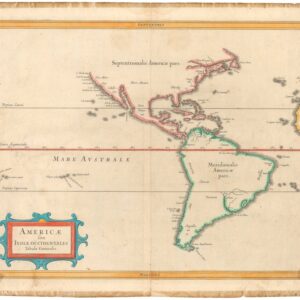Bonne’s 1784 world map on double hemisphere projection.
L’Ancien Monde et le Nouveau en deux Hemispheres
Out of stock
Description
Double-hemisphere world map. The world at a time of increasing geographic knowledge and evolving political borders. In North America, the United States is named and confined along the eastern seaboard. The entire western region is blank with the only place name being Cape Mendocino. There is a large group on islands in the North Pacific including Alaschka in the vicinity of what we now know to be Alaska. Tasmania is attached to Australia; both islands in New Zealand are depicted.
Cartographer(s):
Rigobert Bonne (1727 – 1794) was a French cartographer, widely considered to be one of the most important cartographers of the late 18th century.
In 1773 Bonne succeeded Jacques Nicolas Bellin as Royal Cartographer to France in the office of the Hydrographer at the Depôt de la Marine. Working in his official capacity, Bonne compiled some of the most detailed and accurate maps of the period. Bonne’s work represents an important step in the evolution of the cartographic ideology away from the decorative work of the 17th and early 18th century towards a more detail oriented and practical aesthetic. With regard to the rendering of terrain Bonne maps bear many stylistic similarities to those of his predecessor, Bellin. However, Bonne maps generally abandon such common 18th century decorative features such as hand coloring, elaborate decorative cartouches, and compass roses.
While mostly focusing on coastal regions, the work of Bonne is highly regarded for its detail, historical importance, and overall aesthetic appeal.
Condition Description
Old vertical folds; very good.
References




![[World] Continentem Dudum Notam Componebat & Continentem Noviter Detectam Componebat.](https://neatlinemaps.com/wp-content/uploads/2024/04/NL-01969-composite_thumbnail-300x300.jpg)